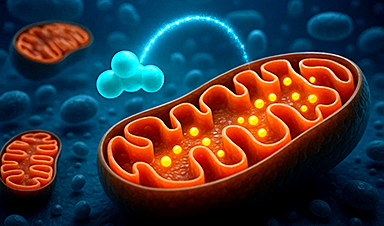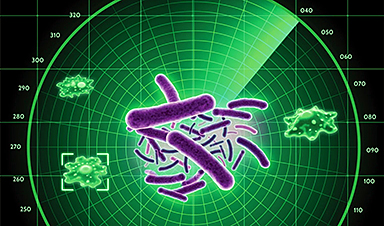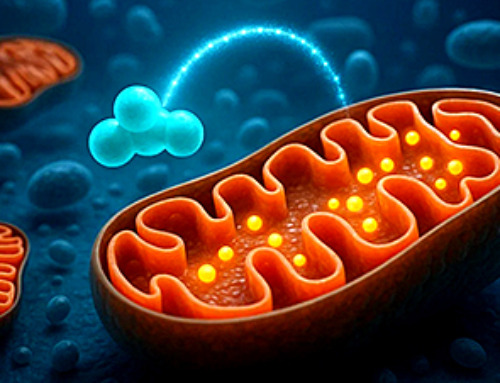As the global threat of H5N1 influenza looms with outbreaks across species and continents including the U.S., three international vaccine and public health experts say it is time to fully resource and support a robust strategy to address this and future potential pandemic influenza threats, including to consider voluntary vaccination for those now at exposure risk.
“At this critical juncture, decisions about vaccine development, stockpiling, and deployment will shape our ability to respond to immediate and future pandemic risks,” write Jesse Goodman, MD, PhD; Rick A. Bright, PhD; and Nicole Lurie, MD, MSPH, in a JAMA Viewpoint published Sept. 4.
The current outbreak of H5N1 in North America has infected poultry, cows, wild birds, and marine and terrestrial mammals, along with at least 13 humans, primarily on dairy and poultry farms. No human-to-human transmission has been reported.
It is highly concerning that this H5N1 strain, compared with prior ones, has had unprecedented spread among mammals. Although human cases have so far been relatively mild, the threat of a pandemic is real, given the virus’s widespread and continued presence close to humans and its potential to reassort with human influenza viruses or mutate to acquire the ability to transmit among humans.”
Jesse Goodman, MD, PhD, Professor, Georgetown University
Goodman is a professor of medicine at Georgetown University School of Medicine and former FDA Chief Scientist; Bright is a principal with Bright Global Health and former Deputy Assistant Secretary for Preparedness and Response and the Director of the Biomedical Advanced Research and Development Authority (BARDA); and Lurie is executive director for Preparedness and Response at the Coalition for Epidemic Preparedness Innovations and Director of CEPI-US and former Assistant Secretary for Preparedness and Response at the U.S. Department of Health and Human Services.
Focusing on vaccines, Goodman and his colleagues outline short, medium and long-term actions to combat the H5N1 risk: protect exposed individuals and reduce pandemic risk; refresh vaccine stockpiles and enhance capacity; lay the groundwork for mitigating future threats.
Short term
The authors note that the U.S. government is readying 4.8 million doses of stockpiled H5N8 vaccine, which is expected to offer cross-protection against current H5N1 strains.
As a short term consideration, the writers say, “Provided adequate supporting data and regulatory review, stockpiled vaccine(s) should be offered voluntarily to individuals at exposure risk.” Those at risk include farm workers with closure contact to animals.
Medium term
In the medium term, the authors stress the importance of ensuring that vaccine stockpiles are refreshed with doses well matched to circulating viruses. The goal is to ensure that at least 20 million individuals, particularly critical workforce members, can be rapidly immunized in the event of a pandemic.
In addition, the public health trio call for taking steps now to ready and enhance global pandemic influenza vaccine development and production capacity, including evaluating the potential of mRNA vaccines, which offer faster and more scalable manufacturing processes.
Long term
Looking further ahead, Goodman and his colleagues advocate for the exploration of pre-pandemic immunization strategies. This could involve vaccinating high-risk groups during interpandemic periods to build population immunity against potential pandemic strains, a strategy that, while unproven, could significantly mitigate the impact of future pandemics.
Finally, the authors call on elected officials, governments, global partners and the private sector to address H5N1 and other pandemic influenza threats through a comprehensive strategy for human and animal health encompassing pandemic vaccines as well as diagnostics, therapies, and non-pharmaceutical interventions. They note that the convergence of health and agricultural concerns, including protecting workers, farm animals, and the economy, presents an opportunity to transcend divides.
They conclude, “The time for decisive action is not when a pandemic strikes, but today, while we have the opportunity.”
Goodman, J. L., et al. (2024). H5 Influenza Vaccines—Moving Forward Against Pandemic Threats. JAMA. doi.org/doi:10.1001/jama.2024.17488
News
Breakthrough Drug Restores Vision: Researchers Successfully Reverse Retinal Damage
Blocking the PROX1 protein allowed KAIST researchers to regenerate damaged retinas and restore vision in mice. Vision is one of the most important human senses, yet more than 300 million people around the world are at [...]
Differentiating cancerous and healthy cells through motion analysis
Researchers from Tokyo Metropolitan University have found that the motion of unlabeled cells can be used to tell whether they are cancerous or healthy. They observed malignant fibrosarcoma cells and [...]
This Tiny Cellular Gate Could Be the Key to Curing Cancer – And Regrowing Hair
After more than five decades of mystery, scientists have finally unveiled the detailed structure and function of a long-theorized molecular machine in our mitochondria — the mitochondrial pyruvate carrier. This microscopic gatekeeper controls how [...]
Unlocking Vision’s Secrets: Researchers Reveal 3D Structure of Key Eye Protein
Researchers have uncovered the 3D structure of RBP3, a key protein in vision, revealing how it transports retinoids and fatty acids and how its dysfunction may lead to retinal diseases. Proteins play a critical [...]
5 Key Facts About Nanoplastics and How They Affect the Human Body
Nanoplastics are typically defined as plastic particles smaller than 1000 nanometers. These particles are increasingly being detected in human tissues: they can bypass biological barriers, accumulate in organs, and may influence health in ways [...]
Measles Is Back: Doctors Warn of Dangerous Surge Across the U.S.
Parents are encouraged to contact their pediatrician if their child has been exposed to measles or is showing symptoms. Pediatric infectious disease experts are emphasizing the critical importance of measles vaccination, as the highly [...]
AI at the Speed of Light: How Silicon Photonics Are Reinventing Hardware
A cutting-edge AI acceleration platform powered by light rather than electricity could revolutionize how AI is trained and deployed. Using photonic integrated circuits made from advanced III-V semiconductors, researchers have developed a system that vastly [...]
A Grain of Brain, 523 Million Synapses, Most Complicated Neuroscience Experiment Ever Attempted
A team of over 150 scientists has achieved what once seemed impossible: a complete wiring and activity map of a tiny section of a mammalian brain. This feat, part of the MICrONS Project, rivals [...]
The Secret “Radar” Bacteria Use To Outsmart Their Enemies
A chemical radar allows bacteria to sense and eliminate predators. Investigating how microorganisms communicate deepens our understanding of the complex ecological interactions that shape our environment is an area of key focus for the [...]
Psychologists explore ethical issues associated with human-AI relationships
It's becoming increasingly commonplace for people to develop intimate, long-term relationships with artificial intelligence (AI) technologies. At their extreme, people have "married" their AI companions in non-legally binding ceremonies, and at least two people [...]
When You Lose Weight, Where Does It Actually Go?
Most health professionals lack a clear understanding of how body fat is lost, often subscribing to misconceptions like fat converting to energy or muscle. The truth is, fat is actually broken down into carbon [...]
How Everyday Plastics Quietly Turn Into DNA-Damaging Nanoparticles
The same unique structure that makes plastic so versatile also makes it susceptible to breaking down into harmful micro- and nanoscale particles. The world is saturated with trillions of microscopic and nanoscopic plastic particles, some smaller [...]
AI Outperforms Physicians in Real-World Urgent Care Decisions, Study Finds
The study, conducted at the virtual urgent care clinic Cedars-Sinai Connect in LA, compared recommendations given in about 500 visits of adult patients with relatively common symptoms – respiratory, urinary, eye, vaginal and dental. [...]
Challenging the Big Bang: A Multi-Singularity Origin for the Universe
In a study published in the journal Classical and Quantum Gravity, Dr. Richard Lieu, a physics professor at The University of Alabama in Huntsville (UAH), which is a part of The University of Alabama System, suggests that [...]
New drug restores vision by regenerating retinal nerves
Vision is one of the most crucial human senses, yet over 300 million people worldwide are at risk of vision loss due to various retinal diseases. While recent advancements in retinal disease treatments have [...]
Shingles vaccine cuts dementia risk by 20%, new study shows
A shingles shot may do more than prevent rash — it could help shield the aging brain from dementia, according to a landmark study using real-world data from the UK. A routine vaccine could [...]





















